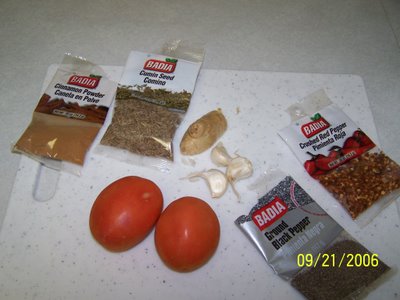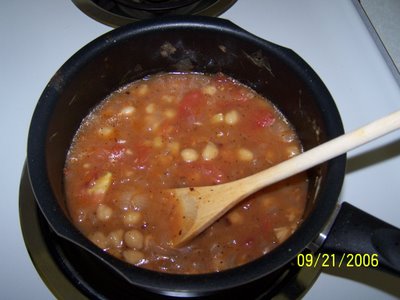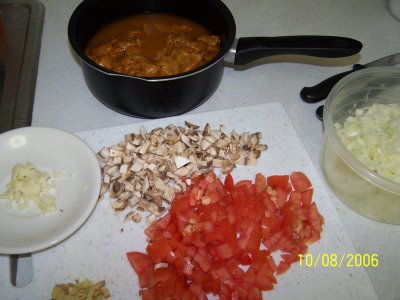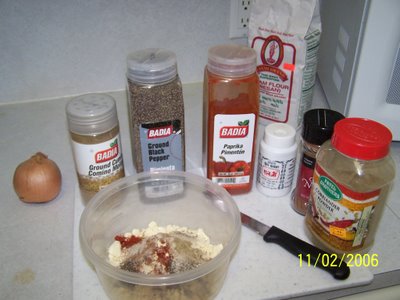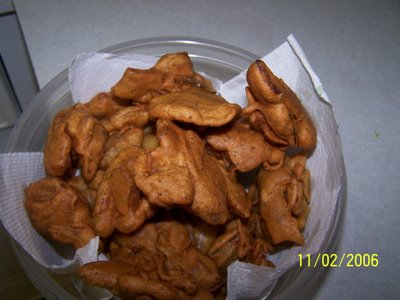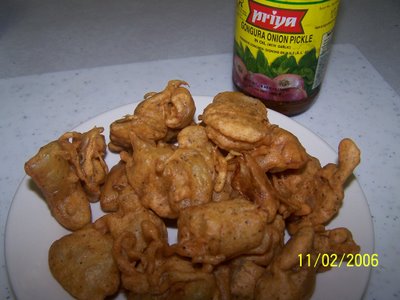When the clock strikes 5:00 pm, and when its raining heavily outside, my thoughts would start wandering about a quick snack which could add spice to the atmosphere apart from the regular tea or coffee. I would then decide that it is time I prepared a snack with my husband's favorite vegetable: The old and gold potato :) ....And I would rush to the kitchen to start preparing the snack before he comes from office. I would owe a thanks to my mom who taught me how to prepare this as it was also my first successfull venture in cooking where frying is involved. So here Iam sharing with you her recipe for Bonda.
Ingredients:
------------------
Potato: 2 large nos
Onion: 2 medium sized nos
Green chilli (minced): 4 - 5 green chillies
Ginger: 1 small piece minced
Garlic: 4 segments minced
Curry leaves finely chopped: 4 or 5 curry leaves
Oil
Salt
For the batter:
Gram flour (besan flour or kadalappodi in malayalam): 2 cups
Salt (a little)
Asafoetida powder (hing): a pinch
Water : required to make thick batter
Masala Powder:
Coriander powder: 1 teaspoon
Chilli powder: 1/2 teaspoon
Garam masala powder (optional): 1 /2 teaspoon
Pepper powder (for those who like it spicy) : 1/4 teaspoon
Asafoetida powder (hing): 1/4 teaspoon
Tadka:
Mustard seeds: 1 teaspoon
Urad dal (optional): 1/4 teaspoon
Cumin seeds: 1 teaspoon
Method:
-----------
1. Cook the potatoes and let it cool. Mash the potatoes once cooled.
2. Chop the onions finely.
3. Heat 2 tablespoons of oil in a kadai. Add the tadka items one by one until all have spluttered.
4. Add curry leaves, green chilli , ginger, and garlic. Saute them well for about 30 seconds, until the raw taste is gone.
5. Add the chopped onions and saute again until the onions turn light brown. Add the masala powders at this stage one by one, mixing uniformly at each stage. Add salt after the masala powders are added. Mix well.
6. Add the mashed potatoes and mix well again. Take off the fire and wait till the contents cool.
7. Meanwhile prepare the batter by mixing the batter ingredients. You may first sieve the gram flour before adding water, to avoid lumps in batter.
8. **Heat oil for deep frying bonda. Test the temperature by dropping a very small piece of the potato mix in the oil. If the piece starts spluttering instantaneously, it means that the oil is ready for frying.
(** Always be careful while you are handling hot oil. Once the oil has attained the required temperature for frying, lower the fire to medium heat and then start frying)
8. Make small balls out of the potato mix once it is cooled. Coat these with the batter prepared. Fry these in oil, until the outer cover of the bonda turns golden brown. Put the bondas in a paper napkin on a plate so that the excess oil is absorbed.
9. Serve it with tomato ketchup or coconut chutney.

